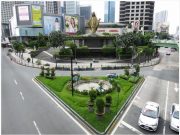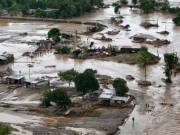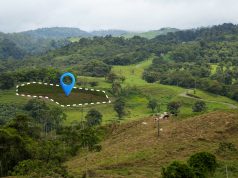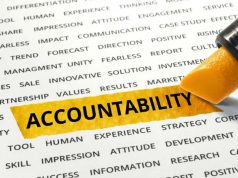The ongoing scandal involving widespread corruption in the Philippines’ flood control projects is more than just a case of money being wasted. For a country known as one of the most disaster-prone in the world, failing to build and maintain strong flood defenses is a deadly problem. This failure turns the challenge of adapting to climate change into a matter of injustice, where systemic corruption leaves vulnerable communities suffering the most. Many now see the poor state of public works as a clear sign of the government’s failure to protect its people.
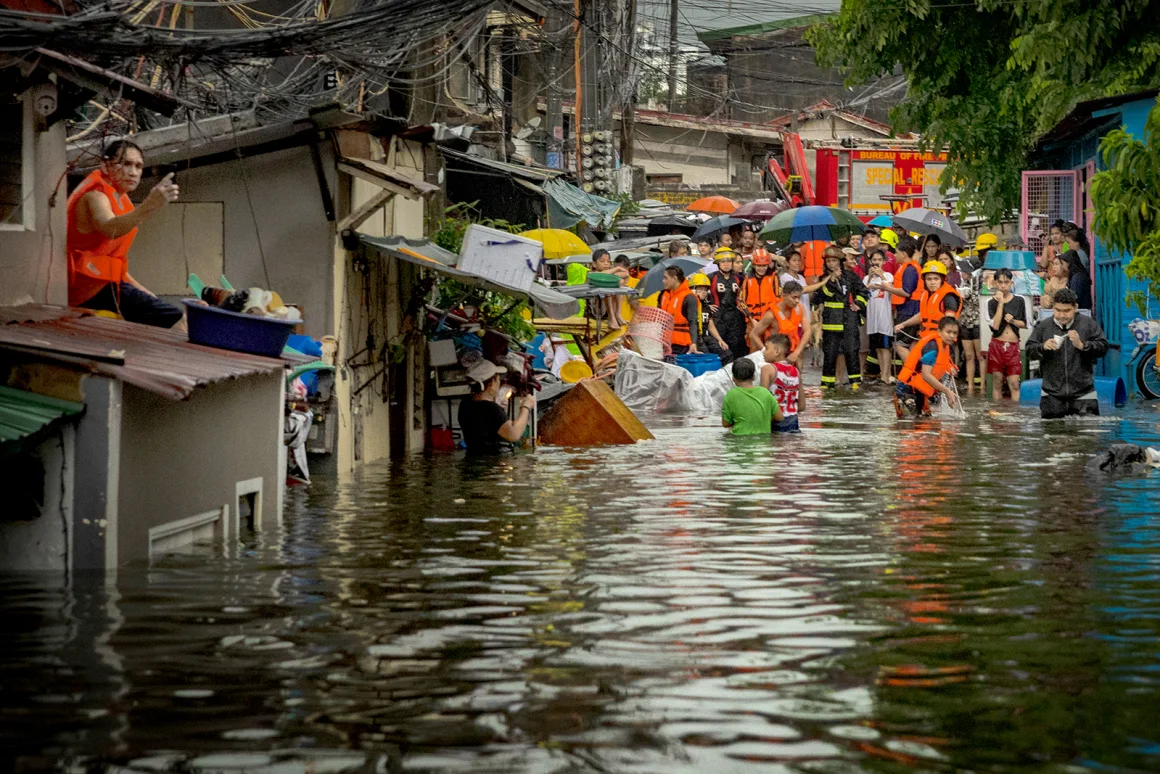
The Cost of Corruption: Why Filipinos Are Drowning
The recent intense flooding, particularly after Typhoon Opong in September 2025, has proven that the government’s current approach to flood defense is a failure. It’s not just an environmental problem; it’s a failure of integrity, turning a climate crisis into a moral one.
The findings are undeniable: the massive amount of money spent on flood control infrastructure over ₱500 billion has not translated into safety.
1. The Betrayal: The Money Was Stolen
The government spent billions on projects like seawalls and flood barriers. But the money didn’t go where it was supposed to. Officials either built the projects very poorly with cheap materials (so they break easily) or they were “ghost projects“, meaning they were paid for but never built at all.
2. The Injustice: People Are Left to Drown
This failure means places like Bulacan and other crowded, flood-prone areas have no protection. They are defenseless. When a big storm or other natural disasters hit, people lose their homes and their lives. This isn’t bad luck with the weather; it’s a direct result of the stolen money. The poor who have nowhere else to live depend completely on these flood defenses to survive.
3. The Cycle: We Repeat the Same Disaster
The system itself is failing the people who need help the most. Because the flood control projects keep failing, the country gets stuck in a loop:
| Disaster → quick, temporary help → inevitable tragedy the next time it rains. |
Corruption means broken or fake flood walls. This leaves vulnerable families exposed to deadly storms, entrenching them further in a cycle of never-ending environmental crisis.
The Flood Control Heist: Where Did the Billions Go?
When your house floods, you deserve to know why the protective wall you paid for didn’t work. The answer is simple: The money was stolen before the wall could be built right. The sheer scale of this corruption isn’t just a scandal; it’s the definition of a failed state.
The core finding is this: The vast majority of taxpayer money meant for public safety is being illegally funneled to a handful of favored individuals, leaving the rest of the country defenseless against climate change.
The Missing Money: A Fatal Percentage
Forget the technical budgeting debates. Here’s what matters:
- The Massive Hole: Top officials estimate that up to half of the trillions of pesos allocated for flood control over the past 15 years may have vanished. This means only a tiny portion, maybe as low as 40%, actually went into materials and labor for the projects.
- Proof of Theft: We’re not talking about petty cash. Hundreds of billions of pesos have been flagged for “non-existent” projects, ghost projects that only live on paper. This is theft executed through padding contracts, using cheap materials for expensive structures, and outright inventing infrastructure that was never built.
The Mechanism of Betrayal: A Private Cartel
How does this kind of massive theft happen? Through a rigged system that bypasses fair competition.
It all points back to a cartel, a small group of people and companies that controls the contracts:
- Concentrated Power: A shocking number of contracts go to a select few. For example, firms linked to just one family secured over 1,200 flood control contracts valued at nearly ₱78 billion since 2016 alone.
- Rigged Bidding: That overwhelming concentration of work proves the bidding process is a sham. It’s not real competition; it’s a closed club where contracts are guaranteed, not earned.
- Visible Indictment: The outrage is fueled by the obvious: families getting rich, flaunting extravagant lifestyles with money that should have been spent on strong dykes and seawalls. Their mansions are being built with the same funds that should be protecting the homes of millions.
We need to stop asking where the money went and start demanding immediate prosecution for the people who turned public works into private fortunes. The integrity of the state is measured in its ability to protect its citizens, and right now, the Philippines is failing catastrophically because of greed.
Dismantling the Corruption Machine: A Plan for Action
This is the ugly truth: The floods are not just a result of corruption; they are a feature of a corrupt system built to steal and protect itself. We need to stop calling this “bad governance” and start calling it what it is: a criminal enterprise that thrives on state power.
The continuous cycle of deadly flood failures is sustained by the “culture of impunity.” This system ensures that the people who steal billions of pesos from flood defenses never face consequences. The good news is that we now know exactly how this machine works, giving us the focus we need to break it.
The Problem: The “Unholy Quartet”
The entire corrupt system runs through a criminal network of people who collude for mutual profit:
- Politicians: They rig the national budget.
- Bureaucrats: Officials from agencies like the DPWH turn a blind eye or actively cooperate.
- Contractors: They form cartels to guarantee contracts.
- Auditors: Sometimes, even the people meant to watch the money are compromised.
This cartel is not an accident; it’s an organized structure where political pay-offs are simply a normalized cost of doing business.
The Two Pillars of Systemic Theft
The corruption machine stands on two key failures in the system:
1. Legislative Sabotage: Budget Rigging at the Top
The real thievery begins in the budget process, specifically through “insertions.”
- The Power Grab: While the budget is initially prepared by the Department of Budget and Management (DBM), lawmakers exploit their power later on. During private meetings like the Bicameral Conference Committee, they sneak in vague, “coded line items” for projects that have not been checked by technical experts.
Instead of relying on engineering needs, political interests decide where flood walls are built. Safety becomes a political issue. This creates a big gap in accountability, allowing unnecessary or fake projects to happen without proper checks.
2. The Contractor Cartel: Guaranteed Money for Friends
The second pillar is the private contracting side, where competition is a lie.
- Bid Manipulation: Companies linked to a select few families form cartels that manipulate bids. They guarantee the contracts go to them, allowing them to pad the costs and deliver substandard work. The government must now use competition law to fight this financial terrorism. By filing cases against firms for bid rigging, the state aims to financially cripple them with massive fines. This strategy is faster and more direct than trying to prove every single kickback, aiming to crush the financial foundation of the cartel.
We know how they steal. We know who is stealing. The time for excuses is over. The priority is to prosecute the corruption cartels and immediately fix the budget process to eliminate political insertions. Safety for millions of Filipinos demands nothing less.
The Two-Step Plan to End Flood Corruption
We can break the “architecture of impunity” by focusing on two pillars: stopping the theft before it starts and punishing the thieves who got away with it.
The entire strategy must focus on radically opening the system and aggressively locking up the high-level thieves.
1. Stop the Theft: Close the Budgeting Loophole
The first step is to end the backroom deals where projects are rigged. We must turn the budget process into an open, honest discussion.
- Livestream the Deals: The tradition of hiding budget discussions must end. We must institutionalize the livestreaming of the Bicameral Conference Committee. This simple step shines a light on who proposes questionable “insertions” and forces legislators to justify every dollar they move. No more secret deals.
- Mandate Transparency: Government must officially support watchdog efforts, like budget trackers that compare initial spending plans with the final law. The Department of Budget and Management (DBM) needs to be forced to publicly explain every major change to flood control funding, eliminating the accountability vacuum where political projects flourish.
- Empower the People: The communities that suffer the most are the best auditors. The DPWH must formally empower local groups and citizens to monitor project progress by giving them access to verifiable data (budget, timeline, location). This turns victims into on-the-ground safeguards against shoddy and “ghost” projects.
2. Enforce the Law: Lock Up the High-Level Thieves
If prominent figures are not convicted, the stealing will continue. We must break the cycle of impunity with harsh, swift action.
- Go After the Cartels: The most powerful tool now is Competition Law. By prosecuting bid rigging through the Philippine Competition Commission (PCC), we can financially crush the contractor cartels. The threat of potential fines against the biggest firms is the strongest deterrent we have. This targets the foundation of the theft, not just the symptom.
- Independent Investigation: The new Independent Commission for Infrastructure (ICI) is vital because Congress can’t police itself. Its mandate to investigate ten years of corruption must be supported to ensure non-politically motivated cases move forward.
- Secure High-Level Convictions: The ultimate deterrent is jail time. The government must expedite the filing of non-bailable malversation cases against high-ranking officials before the Sandiganbayan. A successful conviction and imprisonment of a prominent figure is the only way to validate the new enforcement architecture and signal that the era of untouchable thieves is over.
We know the architecture of failure. Now, we must use the architecture of accountability to tear it down.
Fixing the Failure and Building Our Defenses: Science, Not Patronage
Look, we’ve established that the floods are caused by stolen money, not just heavy rain. Now we need to talk about how they literally get away with it: by building garbage projects or no projects at all.
This means we must take project planning out of the hands of politicians and put it into the hands of science and satellites.
We can no longer afford infrastructure designed for yesterday’s weather or decided by today’s corrupt politician. The only way to stop ghost projects and collapsing seawalls is to create a technical system that is tamper-proof and scientifically required.
1. Let Science Choose the Project, Not Politics
Project selection cannot be based on who is friends with a legislator. It must be based on a cold, hard look at the flood maps.
Mandate NOAH Data. We have to stop letting politicians choose where to build flood defenses and start using science. The law must force the DPWH to use Project NOAH data and its accurate flood maps for every single budget decision; if the science doesn’t say a project is needed, it doesn’t get money. Also, because storms are getting much worse due to climate change, all big projects must be designed for the worst floods now happening, not old weather records. We need independent experts to check the designs before we spend any money, ensuring all new walls and drainage systems are actually strong enough to protect people.
2. Use Satellites to Catch the Thieves
The current system relies on easily faked photos and reports. We need technology that bypasses human corruption; we need tamper-proof oversight.
Satellite Verification is Mandatory. We have to use modern technology to stop contractors from stealing flood defense money. To catch those running “ghost projects,” the government must immediately start using satellites to check project work, which gives a reliable, unchangeable record of whether a structure actually exists and where it is. This is the only way to stop relying on easily faked photos. Alongside this, we need expert fraud auditors to compare the money spent with the satellite evidence, and strict new rules must be put in place to ensure no one can destroy or tamper with official project documents.
We have the science and the technology to fix this. We just need the political will to enforce it and crush the collusion that allows projects to fail before the first storm even hits.
We’ve seen that relying on big, expensive concrete projects is a massive, corrupt failure. It’s time to realize that we can’t beat the water with concrete alone; we must learn to manage it.
The Smart Fix: Managing Water, Not Just Fighting It
The current flood strategy is ineffective and fuels corruption because large-scale concrete projects are easy targets for big kickbacks. We need a fundamental shift in how we approach flood defense, prioritizing smarter, cheaper, and more flexible methods.
A. Stop Chasing the “Political Economy of Concrete”
We have to stop treating massive seawalls as the only answer. Concrete should be the last resort, not the first.
We can’t rely only on expensive concrete walls, which often just invite corruption. Instead, we must immediately shift to smarter, nature-based fixes that are harder to steal from, like planting more trees, creating underground water storage beneath parks, and putting up home cisterns. We also need to get strict about where people can build and improve our flood forecasts. This approach is about managing water holistically: from where the rain falls, through the drains, to the community, making our defenses flexible and strong enough for today’s worsening storms.
B. Put the Power Back in the Community
We must give local communities the power to manage their own flood risk, since they are the true experts in their area. This means training local governments and citizens to use tools like Project NOAH maps to create their own safety plans, identify evacuation routes, and make smart, quick decisions during a storm. Crucially, we need to decentralize the flood budget by spending on many small, local solutions instead of single, giant projects; this makes local people feel more responsible for the work and greatly reduces the huge amounts of money available for national politicians to steal.
We have to maximize global help, like the assistance from the Asian Development Bank (ADB), but that aid must be fully protected from local political interference. The real fight against the floods begins by managing our water intelligently and starving the corruption that feeds off big construction contracts.
Demand Real Safety
This whole crisis, the “Missing Billions“, is a catastrophic betrayal: politicians stealing money meant for flood defense have left millions defenseless against worsening storms, turning climate risk into a deadly injustice. While the government has finally started to fight back by going after the thieves, we must demand more radical change: we need total transparency on all budgets, satellites to track every project, and a complete shift away from big, corruptible concrete projects toward smarter water management.
We can’t wait for the government to fix this alone; here at HousingInteractive should lead the way by promoting properties and development standards that prioritize climate resilience and use modern, smart flood management techniques, showing the public exactly what a truly safe home looks like. Demand that your next home purchase is safe from the systemic failures of the past.
| The state of flood control directly affects your property value and safety. Our new series by HousingInteractive exposes the truth: corruption and ‘ghost’ projects have wasted billions, needlessly putting communities and real estate assets at risk. To protect your investment and demand real solutions, read and follow these articles. Next: Flood Control Projects: Roads That Flood Anyway |




